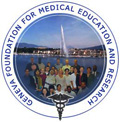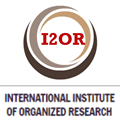Espectro aurículo-facial aislado. Presentación de una paciente
Palabras clave:
síndrome de Goldenhar, microtia congénitaResumen
El espectro aurículo-facial aislado es un defecto que puede presentarse de forma única o como una enfermedad compleja y heterogénea; desde el punto de vista dismorfológico se clasifica como una disrupción. Estos defectos, que por lo general ocurren en el trayecto del primer arco braquial, tienen la forma mínima, que son los apéndices pre-auriculares, y la más severa, en la que se presenta macrostomia y dermoide epibulbar, que se conoce como síndrome de Goldenhar y que puede asociarse con otras malformaciones. Se presenta una niña con una microtía grado IV, asimetría facial ligera que se presentó de forma aislada, sin causa aparente que provocara esta alteración. Se consideran de gran valor el interrogatorio y el examen físico para llegar al diagnóstico clínico y poder realizar un adecuado asesoramiento genético.Descargas
Citas
1. Murialdo G, Piazzi A, Badolati G, Calcagno E, Berio A. Oculo-auriculo-vertebral spectrum with myopathy and velopharyngeal insufficiency. A case report with a non-branchiomeric muscle biopsy. Pediatr Med Chir [Internet]. 2016 [citado 7 Oct 2016]38(2):121. Disponible en: https://www.ncbi.nlm.nih.gov/pubmed/27345603
2. Wang P, Fan Y, Chen X. The etiology research progress of oculo-auriculo-vertebral spectrum. Lin Chung Er Bi Yan Hou Tou Jing Wai Ke Za Zhi [Internet]. 2015 [citado 7 Oct 2016];29(24):2184-8. Disponible en: https://www.ncbi.nlm.nih.gov/pubmed/27093828
3. Bartel-Friedrich S. Congenital auricular malformations: description of anomalies and syndromes. Facial Plast Surg [Internet]. 2015 [citado 7 Oct 2016];31(6):567-80. Disponible en: https://www.ncbi.nlm.nih.gov/pubmed/26667631
4. Beleza-Meireles A, Hart R, Clayton-Smith J, Oliveira R, Reis CF, Venâncio M, et al. Oculo-auriculo-vertebral spectrum: clinical and molecular analysis of 51 patients. Eur J Med Genet [Internet]. 2015 [citado 7 Oct 2016];58(9):455-65. Disponible en: https://www.ncbi.nlm.nih.gov/pubmed/26206081
5. Sleifer P, Gorsky Nde S, Goetze TB, Rosa RF, Zen PR. Audiological findings in patients with oculo-auriculo-vertebral spectrum. Int Arch Otorhinolaryngol [Internet]. 2015 [citado 7 Oct 2016];19(1):5-9. Disponible en: https://www.ncbi.nlm.nih.gov/pubmed/25992144
6. Guida V, Sinibaldi L, Pagnoni M, Bernardini L, Loddo S, Margiotti K, et al. A de novo proximal 3q29 chromosome microduplication in a patient with oculo auriculo vertebral spectrum. Am J Med Genet A [Internet]. 2015 [citado 7 Oct 2016];167A(4):797-801. Disponible en: https://www.ncbi.nlm.nih.gov/pubmed/25735547
7. Beleza-Meireles A, Clayton-Smith J, Saraiva JM, Tassabehji M. Oculo-auriculo-vertebral spectrum: a review of the literature and genetic update. J Med Genet [Internet]. 2014 [citado 7 Oct 2016];51(10):635-45. Disponible en: https://www.ncbi.nlm.nih.gov/pubmed/25118188
8. Colovati ME, Bragagnolo S, Guilherme RS, Dantas AG, Soares MF, Kim CA, et al. Atypical 581-kb 22q11.21 deletion in a patient with oculo-auriculo-vertebral spectrum phenotype. Cytogenet Genome Res [Internet]. 2015 [citado 7 Oct 2016];147(2-3):130-4. Disponible en: http://www.ncbi.nlm.nih.gov/pubmed/26919065
9. Manara R, Schifano G, Brotto D, Mardari R, Ghiselli S, Gerunda A, et al. Facial asymmetry quantitative evaluation in oculoauriculovertebral spectrum. Clin Oral Investig [Internet]. 2016 [citado 7 Oct 2016];20(2):219-25. Disponible en: http://www.ncbi.nlm.nih.gov/pubmed/26578120
10. El Mansoury J, Mbekeani JN. Late recognition of a case of oculo-auriculo-vertebral spectrum. Optom Vis Sci [Internet]. 2016 [citado 7 Oct 2016];93(11):1449-1453. Disponible en: https://www.ncbi.nlm.nih.gov/pubmed/27755235
Cómo citar
Número
Sección
Licencia
Aquellos autores/as que tengan publicaciones con esta revista, aceptan los términos siguientes:
- Los autores/as conservarán sus derechos de autor y ceden a la revista el derecho de primera publicación de su obra, el cuál estará simultáneamente sujeto a una licencia Creative Commons Atribución/Reconocimiento-NoComercial 4.0 Internacional — CC BY-NC 4.0 que permite a terceros compartir la obra siempre que se indique su autor y su primera publicación esta revista.
- Los autores/as podrán adoptar otros acuerdos de licencia no exclusiva de distribución de la versión de la obra publicada (p. ej.: depositarla en un repositorio institucional o publicarla en un volumen monográfico) siempre que se indique la publicación inicial en esta revista.
- Se permite y recomienda a los autores/as difundir su obra a través de Internet (p. ej.: en archivos telemáticos institucionales o en su página web) antes y durante el proceso de envío, lo cual puede producir intercambios interesantes y aumentar las citas de la obra publicada. (Véase El efecto del acceso abierto).





 15 diciembre del 2025
15 diciembre del 2025


